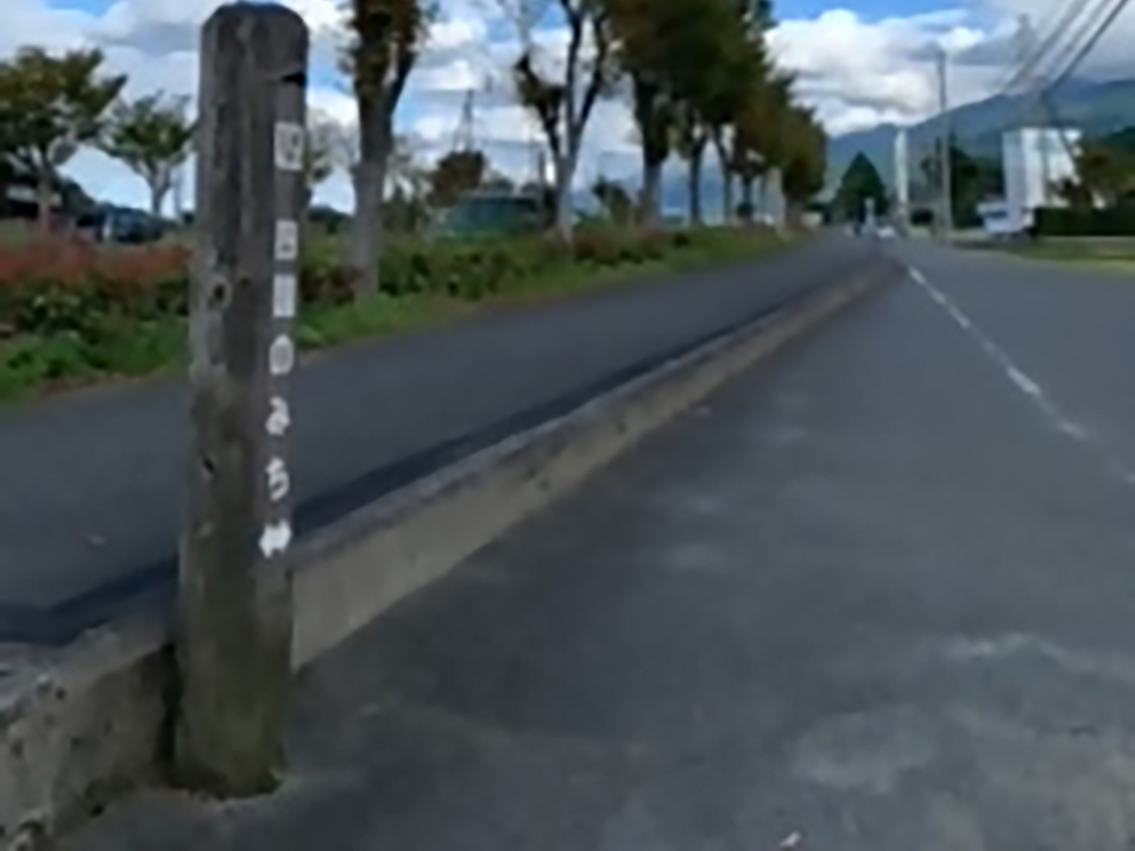Green Road of the City of Water

Green Road of the City of Water
This route stretches from the Kamogawa River through the mountain base and countryside of Hachidoyama. This 7.3 km long course starts from Isono Bridge, continues through Bujo Park, Ojimori Temple, Shutoan Temple, connecting to National Route 11.
Green Road of the City of Water(7.3km)

 Spots to photograph
Spots to photograph
If you wish to receive a certificate, please take a photo that includes yourself at the designated photo point for each course.
Nearby sightseeing spots

-
1
 Iso Bridge
Iso BridgeThe starting point of this course is the 207 m long Iso Bridge spanning the Kamo River. A melody is played when you hit the metallophones attached to the railing in order, so it is also called Melody Bridge. The upstream side is "Sakura" and the downstream side is "Hometown". At the "Saijo Festival" held every October, more than 100 danjiri, portable shrines, and taiko drums march through the city, unfolding a gorgeous Genroku picture scroll. On the evening of the 16th, more than 75 danjiri line up here on the bank of the Kamo River to dedicate the portable shrines. The Saijo Festival reaches its climax as several danjiri unwilling to leave, go down to the riverbed and compete in the river to prevent the portable shrines from entering the shrine.
-
2
 Bujo Park
Bujo ParkBujo Park is said to have started at the end of the Edo period, when a local village headman who like elegance and had the haiku name "Bujo" planted cherry trees to make this scenic spot even more beautiful. This park is known for its approximately 1,500 cherry blossom trees, and is a place of relaxation where you can enjoy nature throughout the four seasons. It is adjacent to the Isono Shrine, Otabisho. When the Saijo Festival is held, Danjiri with lanterns gather and the Otabisho venue is filled with spectators.
-
3
 Bamboo Groves
Bamboo GrovesThere are bamboo groves about 100 m of unpaved road. It's a special space where you can feel the wind and light, as if you've slipped back in time.
-
4
 Jizohara Jizoan
Jizohara JizoanJizohara Jizoan was once used by Kobo Daishi when he visited Shikoku and it is said that Jizoson was carved into stone and enshrined here overnight. It is said that the worshipers are constantly visited because of miracle-working, and from someday, this area has been called Jizohara. Even today, there is still a custom that pilgrims stop and visit it.
-
5
 Oshimori Temple
Oshimori TempleOshimori Temple is famous for its old osmanthus tree, which is a nationally designated natural monument. The osmanthus is a large tree with a root circumference of 4 m and a height of 15 m, which was said to be the largest in Japan when it was designated in 1927. Every year when the Saijo Festival approaches, the sweet scent of osmanthus wafts through the surrounding villages. In 2001, it has also been selected as one of the 100 Best Fragrant Landscapes by the Ministry of the Environment.
-
6
 Shutoan
ShutoanShutoan is officially called Muroyama Yoshidoji. From this area, the autumn leaves of Muroyama in the autumn look beautiful, so it has been called the "autumn city" for a long time. At one point, Ichiyanagi Naokira, 3rd lord of the Komatsu domain, was called Shutoan after giving the "Shutoan" amount in the temple kitchen and became familiar. Also, there is a monument written by Kyoshi Takahama when he visited the grave of his grandparents.
-
7
 End point, National Route 11
End point, National Route 11Arrived at National Route 11 at the end point. Until the next course (Ring 24 going on old national highway) will be 10 km or more.



